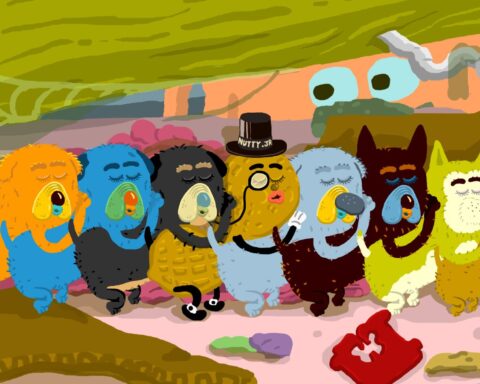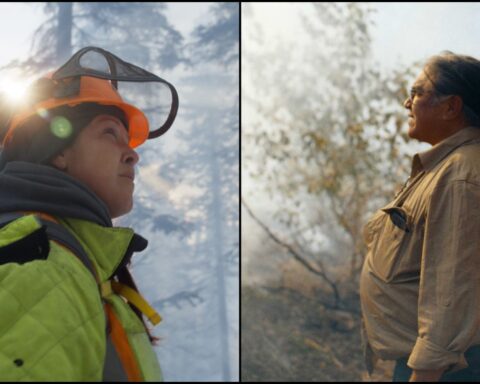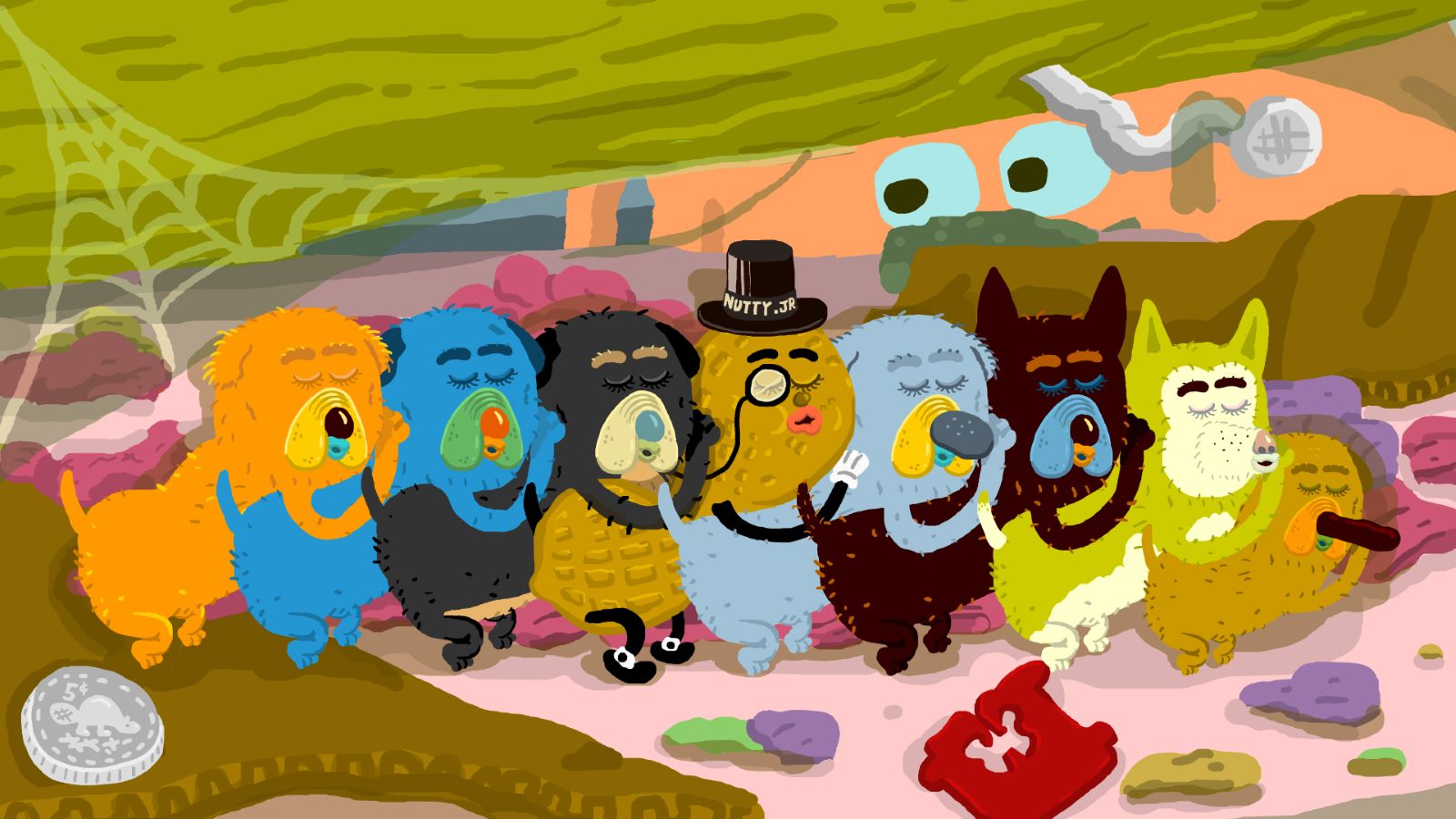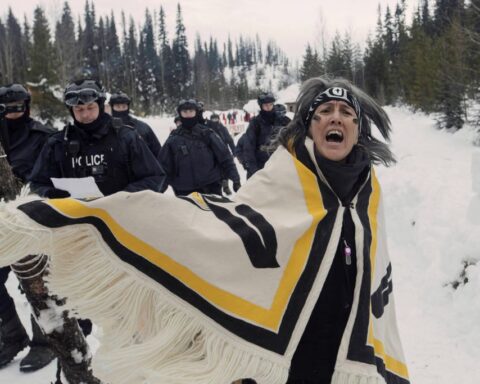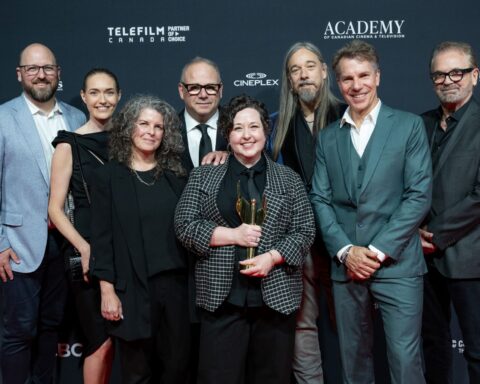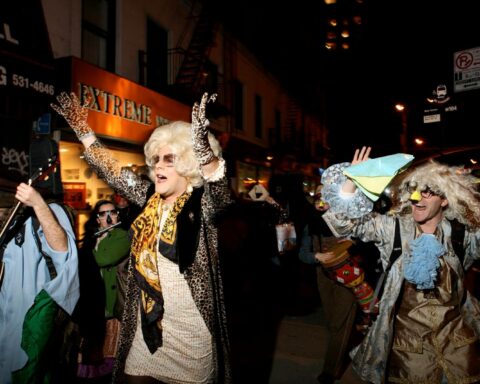The documentary So Surreal: Behind the Masks opens with a scene that could belong to a vintage detective story. The director, Cree filmmaker Neil Diamond, a middle-aged hipster in his spectacles and a short greying ponytail, enters a phone booth in New York City and dials the number of a private investigator. There’s someone he needs to find who doesn’t seem to want to be found.
It’s a case of a stolen mask, the Raven Transformation Mask, an object of inestimable value to its owners, the Kwakwaka’wakw people of the coast of British Columbia and Vancouver Island, a sacred object designed to evoke awe and surprise. During the potlatch ceremony, a performer would appear before assembled clans and guests, hidden inside an abstract animal or bird. At a climactic moment, when he pulled a string, the mask would open to reveal a second face inside of a human or supernatural being.
So Surreal, co-directed by Diamond and Joanne Robertson, traces the journey of that mask from 1921, when it was seized by the Canadian government along with hundreds of other potlatch objects, from a small island off the coast of northern Vancouver Island. From there, the mask took an epic journey to New York, Paris, and parts unknown. Although the mask was torn from its original purpose, it continued to wield a transformative effect on strangers who encountered it.
In the 1940s, New York City became a haven for the leading figures of the Surrealist movement, rebelling against the Western mechanical rationalism that had led to the mass slaughter of the First World War. The group included the leader AndréBreton, who wrote the Surrealist Manifesto one hundred years ago this fall, along with Max Ernst, Roberto Matta, and Enrico Donati, as well as art critics Georges Duthuit, Robert Lebel, and the anthropologist Claude Lévi-Strauss.
Ernst was the one who discovered a trove of Indigenous Northwest Coast and Alaskan Yup’ik masks in Julius Carlebach’s gallery on Third Avenue, most of which had been deaccessioned from George Heye’s Museum of the American Indian, which is now part of the Smithsonian Institution. Following Carlebach’s lead, the Surrealists avidly bought up the Indigenous masks, using them as stylistic influences and poetic inspiration. When the war ended, they took those masks back to Paris, where they ended up in private and public collections, including at the Louvre.

The interface between Indigenous and mainstream Western culture has been a central subject for Diamond, born 60 years ago in the community of Waskaganish, Quebec, on the southeast shore of Hudson Bay. In 2009, with co-directors Catherine Bainbridge and Jeremiah Hayes, he released the Peabody Award-winning documentary, Reel Injun, exploring how Hollywood shaped negative stereotypes of Indigenous people. Earlier in 2024, co-directing with Bainbridge, he released a sequel, Red Fever, about the influence of Indigenous culture on fashion, sports, American democracy, and the environmental movement. In Red Fever, he treats the question of cultural appropriation as a kind of perverse flattery, wryly asking the question, “Why do they love us so much?”
In a sense, So Surreal: Behind the Masks popped out of that film, much like a transformation mask revealing its secondary layer. When Diamond learned about the Indigenous influence on Surrealist art, he drew a connection to the events of the 1921 potlatch theft and midcentury New York studios. The trail led him to Juanita Johnson, executive director of the U’Mista Cultural Centre in Alert Bay, an organization that has been working for decades, with many successes, to retrieve the stolen potlatch collection.
Through the film, he meets a lively collection of historians, curators, and contemporary Indigenous artists, including the influential Canadian art dealer Donald Ellis, who becomes his ally in the search for the missing mask. In a climactic scene, the story takes to Paris with the ebullient Yup’ik storyteller and dancer Chuna McIntyre, to visit one of his people’s ceremonial masks in the Louvre, where he honours it with a dance, and then offers another for Leonardo da Vinci’s Mona Lisa.

Before Diamond could complete his two films, another kind of mask problem arose: the COVID-19 pandemic, which shut down filming for 2022. “We got stopped in our tracks,” says Diamond. “I couldn’t travel down south or to the smaller Native communities, which were very vulnerable.”
During the pandemic, Diamond isolated in Waskaganish, where he owns and publishes a community newspaper, Nation. Much of the collaboration with his Montreal crew and co-director Joanne Robertson was done remotely.
“We talked on the phone,” Diamond said, “or by Zoom every day, sometimes several times a day, and they would send me cuts as we went along and I did a rough narration in my basement.”
While he says he has a strong sense of story and what he wants to see on camera, he credits Robertson for being the organized one of the partnership.
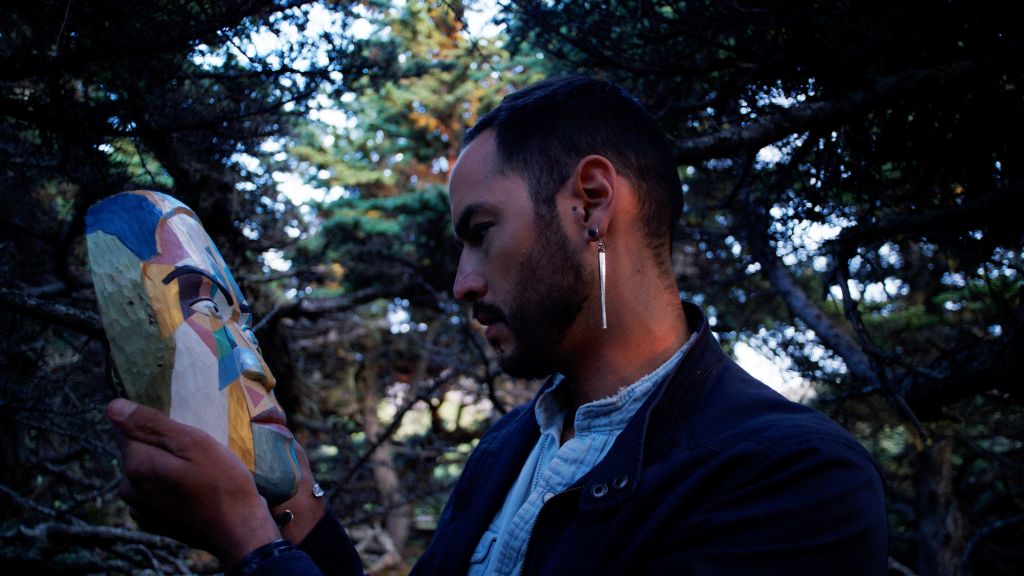
“Neil and I have worked together, on and off, over for the past 25 years,” says Robertson. “We have a shorthand and we each have our superpowers. What I love is that I worked on every stage from researching to writing, directing, producing, and collaborating with Rebecca Lessard, our editor, and Kara Blake, who’s doing motion design; they both worked on Red Fever. And then we worked with really wonderful DPs and folks on the ground in each of our locations.”
She sees So Surreal as a hopeful film, literally about the onscreen characters’ desire for the return of the Raven Transformation Mask, but also for the possibilities of cross-cultural appreciation.
“In talking to contemporary Indigenous artists,” says Robertson, “you see that they see the Surrealists were attempting to get back to what it means to be human, something André Breton was very much obsessed with. The masks were a reminder that what we see in front of us isn’t all there is. As Chuna says, the Surrealists kind of got it right.”
There are other less hopeful stories she uncovered, about the international museum system’s celebration of conquest, and the protective world of the art and antiquities market. That part concerns “people who don’t want to be named, who don’t want to ruin their relationship with other people. There’s a whole ecosystem there.” But these, she says, are subjects for other films.

Like Reel Injun, So Surreal: Behind the Masks runs less than 90 minutes, hopping briskly over vast cultural and geographical territory, tied together by Diamond’s relaxed onscreen presence and wry narration.
I ask him if he feels he assumes an onscreen persona, a word from Latin, originally referring to a theatrical mask.
“I think it’s pretty much me,” he says.
He recalls he appeared briefly on camera in a film, The Last Explorer (2009), a historical docudrama about his great uncle who guided two cartography expeditions through Labrador. It’s a film co-directed by Ernest Webb, and co-written with Bainbridge, the co-founders of Diamond’s Montreal-based production company, Rezolution Pictures.
It was Bainbridge, he says, who “pushed me in front of the camera.” Although he didn’t initially feel comfortable, he got used to it “to the point that I sometimes forget the camera is there.”
The films are imbued with his perspective, one that defies the stereotype that Indigenous culture is characterized by suffering and loss, rather than adaptation, resistance, and transformation.
“I’m not an angry person,” Diamond says. “I have a sense of humour. I grew up watching documentaries about Native people and they’re usually very angry or depressing. I think we’ve had enough of those. There’s a lot of hope and humour in the stories we tell. That’s part of the culture I come from. You know, people can laugh about a lot of things that happened to them. And it’s a good way to deal with it. You laugh so you don’t cry.”
This article originally appeared in POV #122 (Fall/Winter 2024).



